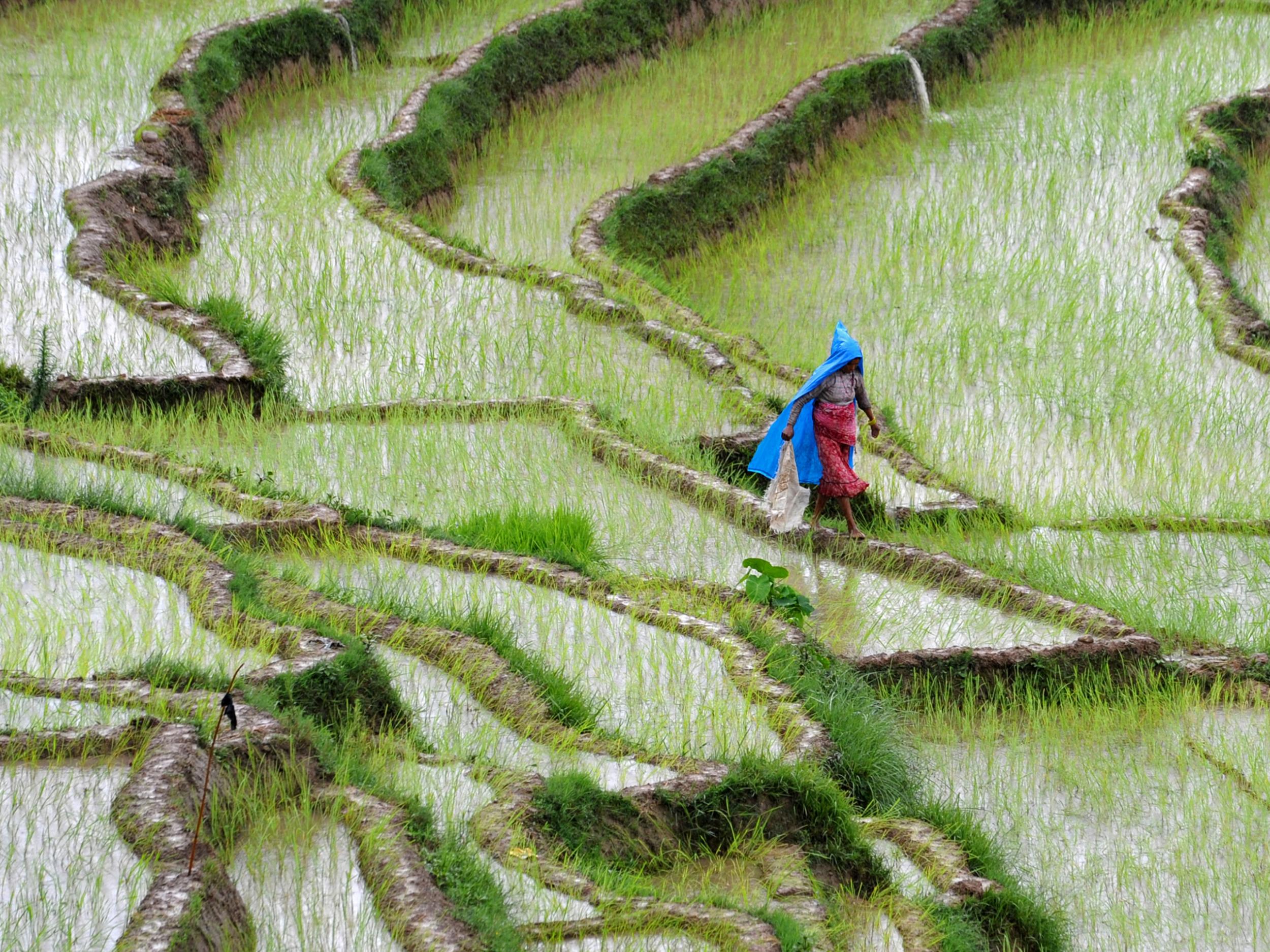Carbon dioxide pollution is making rice less nutritious and could stunt growth in millions of children, finds study
Experiments on staple crop for two billion people reveal ‘underappreciated risk of burning of fossil fuels and deforestation’

Your support helps us to tell the story
From reproductive rights to climate change to Big Tech, The Independent is on the ground when the story is developing. Whether it's investigating the financials of Elon Musk's pro-Trump PAC or producing our latest documentary, 'The A Word', which shines a light on the American women fighting for reproductive rights, we know how important it is to parse out the facts from the messaging.
At such a critical moment in US history, we need reporters on the ground. Your donation allows us to keep sending journalists to speak to both sides of the story.
The Independent is trusted by Americans across the entire political spectrum. And unlike many other quality news outlets, we choose not to lock Americans out of our reporting and analysis with paywalls. We believe quality journalism should be available to everyone, paid for by those who can afford it.
Your support makes all the difference.As carbon dioxide levels in the atmosphere goes up, the nutritional value of rice will go down, according to an international team of scientists.
The finding has serious implications for the health and early development of the two billion people who rely on rice as their primary food source, especially as emissions are projected to increase in the coming decades.
In April the concentration of carbon dioxide in the atmosphere reached its highest level in at least 800,000 years – averaging 410 parts per million (ppm) across the entire month.
When grown under the higher carbon dioxide conditions expected in the second half of this century – between 568 and 590 ppm – scientists found that levels of protein, iron, zinc and B vitamins all took a nosedive.
Although carbon dioxide is one of the raw materials plants use to power themselves via photosynthesis, it seems that too much of it is not necessarily a good thing.
“People say more carbon dioxide is plant food – and it is,” said Dr Lewis Ziska, a plant physiologist at the US Department of Agriculture, who coauthored the new study.
“But how plants respond to that sudden increase in food will impact human health as well, from nutritional deficits to ethnopharmacology to seasonal pollen allergies – in ways that we don’t yet understand.”
This study presented the first evidence that B vitamin levels decrease under these conditions. The biggest decline – of more than 30 per cent – was seen in vitamin B9 or folate, which is often taken as a supplement by pregnant women to reduce the risk of birth defects.
Scientists also recorded an average reduction of around 10 per cent in protein and iron, and 5 per cent in zinc.
“Rice is not just a major source of calories, but also proteins and vitamins for many people in developing countries and for poorer communities within developed countries,” said Professor Kazuhiko Kobayashi of the University of Tokyo.
For thousands of years rice has been a dietary staple for many Asian populations, and in recent years the same has been true across much of Africa.
Around 600 million people in countries including Bangladesh, Cambodia and Indonesia get more than half of their daily calories and protein directly from rice.
“Reductions in the nutritional quality of rice could affect maternal and child health for millions of people,” said coauthor Professor Kristie Ebi from the University of Washington.
Although the scientists noted it is difficult to predict the exact outcomes of mass consumption of low-nutrient rice, they suggest such poor nutrition could result in growth stunting, diarrhoeal diseases and even increase the risk of malaria.
These effects are likely to be most pronounced in poorer countries.
To arrive at their conclusions, the researchers set up structures in Chinese and Japanese rice fields into which they could pump carbon dioxide through plastic tubing.
“I first started using this technique in 1998, because we knew that plants raised in a plastic or glass house do not grow the same as plants in normal, open field conditions,” said Professor Kobayashi.
“This technique allows us to test the effects of higher carbon dioxide concentrations on plants growing in the same conditions that farmers will grow them some decades later in this century.”
The results of these experiments were published in the journal Science Advances.
Previous work has suggested that surges in carbon dioxide could lead to increased plant growth in the coming decades, but this new work suggests this will count for very little in agriculture if the plants being grown do not adequately nourish the people eating them.
The scientists think elevated levels of the greenhouse gas increase the carbohydrate content, but at the expense of protein and minerals. As for the reduction of B vitamins, this was thought to be linked to a decline in nitrogen that tends to occur in heavily carbon dioxide-infused plants.
“This is an underappreciated risk of burning of fossil fuels and deforestation,” said Professor Ebi.
However, not every strain of rice responded in the same way to increased carbon dioxide levels, and the researchers suggested that either breeding or genetically engineering new strains could be a way to combat the expected drop in nutrient levels.
Join our commenting forum
Join thought-provoking conversations, follow other Independent readers and see their replies
Comments